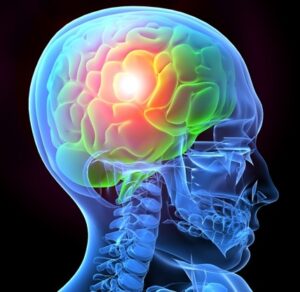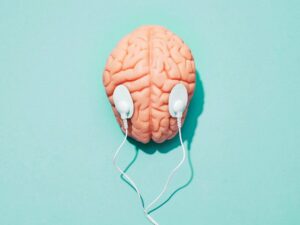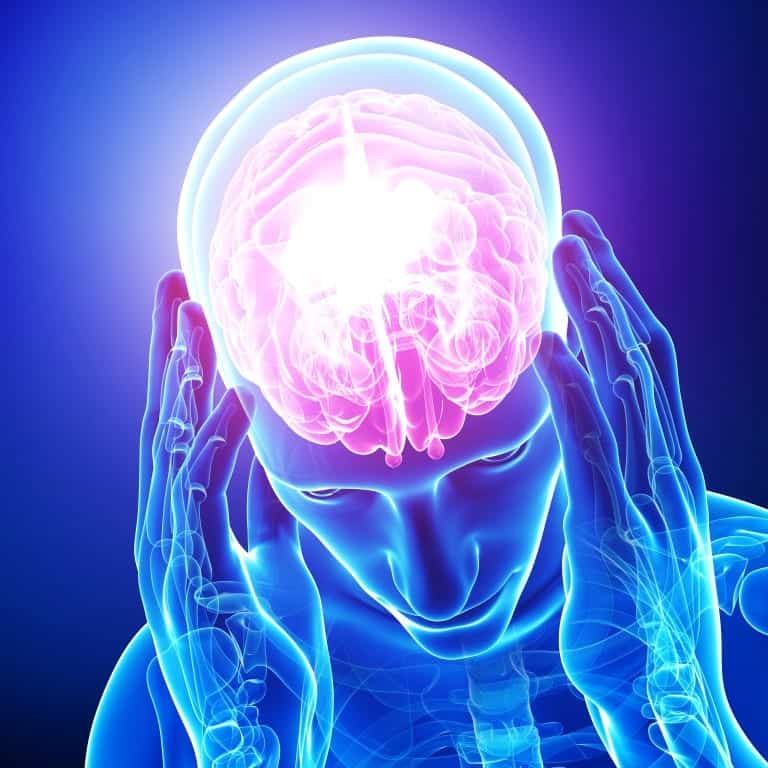Attention Deficit Hyperactivity Disorder (ADHD) is a mental disorder that affects children and adults. It is characterized by problems with focus, hyperactivity, and impulsiveness. There are many different treatment options for ADHD, including medication, therapy, and neurostimulation. In this blog post, we will discuss the pros and cons of neurostimulation for ADHD.
Contents
What Is Neurostimulation?
 Neurostimulation is a type of medical therapy that utilizes electrical stimulation to treat neurological disorders. It can be used to help improve the symptoms of certain conditions such as Parkinson’s disease, depression, chronic pain, and more. This technique works by sending small electrical pulses through electrodes placed near or on nerve endings in the body.
Neurostimulation is a type of medical therapy that utilizes electrical stimulation to treat neurological disorders. It can be used to help improve the symptoms of certain conditions such as Parkinson’s disease, depression, chronic pain, and more. This technique works by sending small electrical pulses through electrodes placed near or on nerve endings in the body.
These pulses are believed to modify the firing rate of neurons, which can help to improve the functioning of affected areas. Neurostimulation is noninvasive and doesn’t require surgery or drugs, making it a safe alternative for those who want to avoid traditional treatments.
The results vary from person to person, depending on the condition being treated and its severity. However, be sure to discuss with a professional before embarking on any neurostimulation treatments. As it is not suitable for everyone. With the right care and attention, this treatment can potentially provide relief from neurological symptoms.
Is Neurostimulation For ADHD Helpful?
Neurostimulation is a form of treatment used to alleviate the symptoms of ADHD, specifically those that are related to inattention, impulsivity, and hyperactivity. Neurostimulation can be administered through electronic stimulation or magnetic stimulation of the brain’s neural pathways.
This type of therapy has been studied extensively over the years. And yes it is believed to be helpful in reducing the symptoms of ADHD. Studies have found that neurostimulation can help reduce impulsivity, hyperactivity, and distractibility in those with the disorder.
One study has found that neurostimulation can be effective in helping those with ADHD pay attention and stay on task longer. Research has also found that neurostimulation can help individuals to better control their emotions, become more organized and make decisions more quickly.
How Does Neurostimulation ADHD Work?
 If you are considering neurostimulation for ADHD, there are several treatments available. Common treatments include transcranial magnetic stimulation (TMS) and deep brain stimulation (DBS).
If you are considering neurostimulation for ADHD, there are several treatments available. Common treatments include transcranial magnetic stimulation (TMS) and deep brain stimulation (DBS).
TMS is a non-invasive procedure that uses magnetic fields to stimulate nerve cells in the brain. During treatment, an electromagnet is placed on the head to deliver electrical pulses to the brain. These pulses are thought to stimulate and normalize activity in areas of the brain that are associated with ADHD symptoms.
DBS is an invasive procedure where electrodes are surgically implanted into specific parts of the brain. The electrodes then send electrical pulses to those areas, which helps modulate and regulate activity in certain regions of the brain.
When it comes to treating ADHD, both TMS and DBS can be effective treatments. However, research is still ongoing and more studies are needed to determine which treatment is better for each individual case of ADHD.
What Are The Benefits Of Neurostimulation ADHD?
There are several benefits of neurostimulation for ADHD treatment. Some of these are listed below:
Improved Focus and Attention
One of the obvious and most important benefits of neurostimulation for ADHD treatment is the improved focus and attention it can bring. Neurostimulation helps to improve cognitive function, which in turn helps with focusing on tasks more easily as well as being able to recall information better.
Reduced Impulsivity
ADHD is often associated with impulsive behaviors, such as blurting out answers during class or interrupting conversations. Neurostimulation helps to reduce these impulses, making it easier to stay in control and think through decisions before acting on them. For instance, studies have shown that neurostimulation can lead to fewer impulsive responses in individuals with ADHD.
Reduced Hyperactivity
Neurostimulation can also help to reduce hyperactivity associated with ADHD. Studies have shown that neurostimulation can lead to a decrease in physical activity, particularly when the stimulation is applied to the prefrontal cortex. This can help individuals with ADHD stay focused on tasks and finish them more easily.
Improved Social Skills
Another benefit of neurostimulation for ADHD treatment is improved social skills. Neurostimulation has been shown to help individuals with ADHD improve their communication and interaction with others. As well as their ability to recognize facial expressions. This can make it easier for those with ADHD to form positive relationships and interact better with peers and family.
Improved Executive Functioning
 Finally, neurostimulation ADHD is associated with improved executive functioning. This includes the ability to plan, organize and prioritize tasks. Neurostimulation is thought to improve these executive skills by improving cognitive function, which can help individuals with ADHD become more organized and productive.
Finally, neurostimulation ADHD is associated with improved executive functioning. This includes the ability to plan, organize and prioritize tasks. Neurostimulation is thought to improve these executive skills by improving cognitive function, which can help individuals with ADHD become more organized and productive.
Overall, neurostimulation is an effective treatment for managing the symptoms of ADHD. The benefits are numerous, from improved focus and attention to reduced impulsivity and hyperactivity. Therefore, it is a viable option for those looking to manage their ADHD in a safe and natural way.
What Are The Risks Involved?
Generally, neurostimulation for ADHD is considered a safe procedure. However, as with any medical intervention, there are risks involved. These include:
Infection
One of the most common risks is an infection at the implant site. To reduce the chances of this happening, doctors will prescribe antibiotics before and after the procedure to help prevent any infections from occurring.
Injury or Damage to Nerves & Blood Vessels
Neurostimulation carries a risk of injury or damage to nerves and blood vessels due to improper placement of the electrode or an electrical current that is too strong. To minimize this risk, doctors will use imaging technology such as MRI or CT scans to ensure the correct placement of electrodes before performing the procedure.
Unwanted Side Effects
Neurostimulation for ADHD can also cause unwanted side effects such as nervousness, insomnia, headaches, and dizziness. In some cases, these can be avoided by adjusting the stimulation settings and frequency.
Long-Term Effects
Finally, there is a potential risk of long-term effects due to neurostimulation for ADHD that are not yet known. As research continues to increase in this area, it is important to monitor any changes or side effects closely and speak with a doctor if any concerns arise. With careful monitoring and adjustments, most of these risks can be minimized.
Overall, neurostimulation for ADHD is a safe and effective treatment option that can help to improve symptoms in those with the disorder. However, it is important to understand the possible risks involved before making a decision about whether this form of treatment is right for you. Talk to your doctor and do your research to make sure that you are making an informed decision.
What Other Treatments Do You Need To Overcome ADHD?
Despite neurostimulation, you may also need to explore other treatments for ADHD. These can include:
- Counseling: A therapist can help you learn strategies to manage your symptoms and develop better coping skills.
- Medication: Stimulant medications can be used to reduce hyperactivity, impulsivity, and inattention. Non-stimulant medications are available for individuals who cannot tolerate stimulants or have not had success with them.
- Exercise: Exercise can help increase focus and reduce impulsive behaviors. It can also improve sleep patterns and overall mood.
- Dietary Changes: Eating a healthy, balanced diet may help you manage your symptoms. Avoiding processed foods and eating regularly can be beneficial in managing ADHD.
- Nutritional Supplements: Certain supplements, such as omega-3 fatty acids and iron, can help reduce symptoms of ADHD.
- Biofeedback: This technique teaches you how to control your body’s responses, such as heart rate and muscle tension. It can be used to manage impulsive behaviors.
- Relaxation Techniques: Relaxation techniques, such as yoga or meditation, can help reduce stress and anxiety associated with ADHD.
All in all, there is no one-size-fits-all approach to managing ADHD. It is important to consider all of your options and find the best treatment plan that works for you. Your doctor can help you determine which treatments are right for you, so be sure to talk to them if you have any questions or concerns.
Conclusion
To conclude, neurostimulation ADHD seems to be a promising new treatment for those struggling with attention deficit hyperactivity disorder. It is important to note that more research is needed to determine the safety and effectiveness of this type of therapy. And it should only be used in consultation with a medical professional.
But many individuals have experienced a positive outcome from neurostimulation ADHD treatments. As more research is conducted, these results are likely to become even more impressive as we better understand the potential of this type of therapy.
For more information, please contact MantraCare. ADHD is a neurodevelopmental disorder characterized by difficulty in paying attention, hyperactivity, and impulsivity. If you have any queries regarding Online ADHD Counseling experienced therapists at MantraCare can help: Book a trial ADHD therapy session


